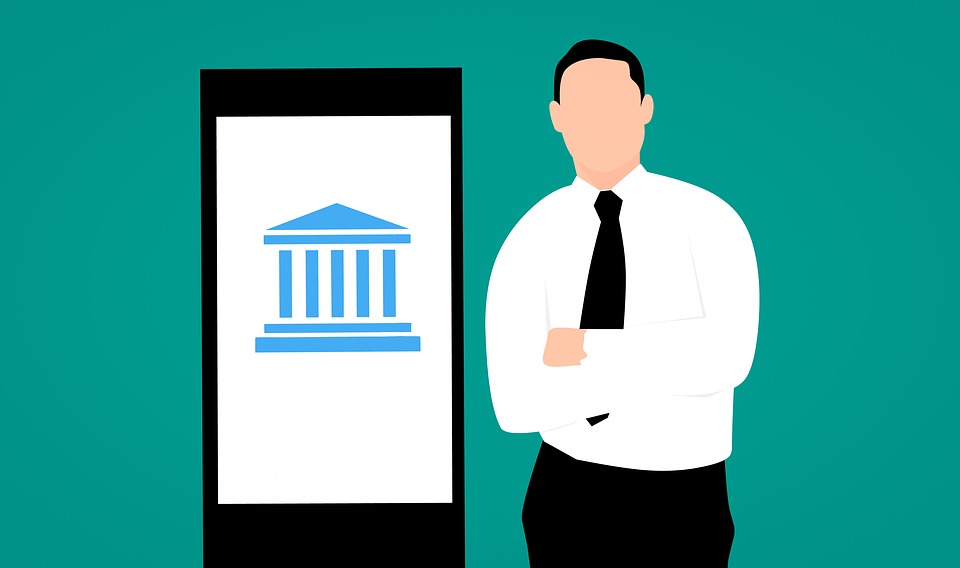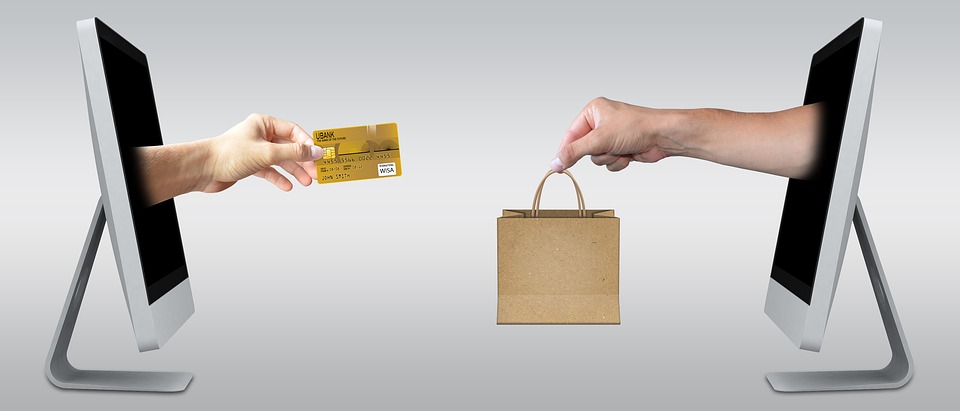
How to View History of All Transactions in Quickbooks
 Want to view the history of all your business’s financial transactions? Assuming you use Quickbooks, you can pull a report of all your transactions. Known as an Audit Log report, it reveals every change that you’ve made to your Quickbooks account, including expenses, revenue and more. Running an Audit Log report on a regular basis is a great way to ensure that your business’s financial records are accurate and up to date. However, you’ll need to follow a few steps to run an Audit Log report in your Quickbooks account.
Want to view the history of all your business’s financial transactions? Assuming you use Quickbooks, you can pull a report of all your transactions. Known as an Audit Log report, it reveals every change that you’ve made to your Quickbooks account, including expenses, revenue and more. Running an Audit Log report on a regular basis is a great way to ensure that your business’s financial records are accurate and up to date. However, you’ll need to follow a few steps to run an Audit Log report in your Quickbooks account.
First, log in to your Quickbooks account, and then click the gear icon at the top of the page. From here, choose “Audit Log” under the “Tools” menu. This will automatically run a report containing all your transactions entered into Quickbooks. You can then save or email this report, according to your preference.
Of course, some business owners have many changes related to a single transaction. In this case, you’ll want to run an “Audit History” for the respective transaction to see a list of all changes that you’ve made to it. This is done by opening the transaction that you’d like to see the changes for, at which point you can click the “More” button at the bottom of the transaction page, followed by “Audit History.” Quickbooks will then open the “Audit Trail” for the transaction, including a breakdown for all changes associated with the transaction. You can expand the information contained in this report by clicking “Show All.” Alternatively, you can click “Compare” to compare the transaction with one or more other transactions.
It’s important to note that Quickbooks will display a maximum of 150 records in the “Audit Log.” For most businesses, 150 records is more than enough to cover any single transaction. But there are some businesses that process more than 150 records per transaction. If this sounds familiar, you’ll need to scroll to the bottom of the transaction and click “More.” This will prompt Quickbooks to display any additional records past the 150 mark.
According to Intuit, the “Audit Log” may contain a variety of information that’s created by Quickbooks. Support Representatives, for instance, denotes a change made by a Quickbooks consultant, whereas “System Administration” denotes a change that was automatically made by the Quickbooks software. Either way, you should be aware of these chances when running and analyzing an “Audit Log” for your business.
Did this tutorial work for you? Let us know in the comments section below!

What Is Bad Debt and How Do I Record It in Quickbooks?
 It’s not uncommon for businesses to allow customers to pay after their product or service has been delivered. A landscaping company, for example, may send its customers an invoice requesting payment after their landscaping service has been finished. Unfortunately, though, customers don’t always pay. And when a customer fails to pay, it can hurt a business’s finances. As a business owner, it’s important that you understand bad debt and the process for recording it in your accounting software.
It’s not uncommon for businesses to allow customers to pay after their product or service has been delivered. A landscaping company, for example, may send its customers an invoice requesting payment after their landscaping service has been finished. Unfortunately, though, customers don’t always pay. And when a customer fails to pay, it can hurt a business’s finances. As a business owner, it’s important that you understand bad debt and the process for recording it in your accounting software.
Bad Debt Explained
Bad debt is any debt that you are unable to collect from the respective customer or client. Debt becomes bad after you’ve exhausted all collection attempts to no avail. If you’ve contacted the customer a dozen or more times and haven’t been able to collect payment, it’s probably a good idea to write it off as a bad debt. Recording the unpaid invoice as bad debt helps to balance your business’s books so that it doesn’t appear as revenue when the customer never paid for it.
The Cash Basis Method
In Quickbooks, you can record bad debt using the cash basis method. According to Intuit, this is the correct way to record it if you file your business’s taxes on a cash basis. It eliminates the unpaid invoice as income, essentially lowering your taxable income and improving your business’s finances in the process.
To record bad debt using the cash basis method, you’ll need to void or delete the unpaid invoice. This is done by logging in to your Quickbooks account and choosing “Sales” or “Invoices” at the top of the menu, followed by “Customers.” From here, choose the name of the customer who didn’t pay his or her invoice. Next, click “Open Invoices” next to the drop-down menu for “Show.” You can then select a date range for “Date” to narrow down your selection of invoices. Once you’ve located the unpaid invoice, click it to select it. This will open the invoice, at which point you can choose “More,” followed by “Void.” Quickbooks will then ask you to confirm the voiding of the invoice.
While optional, many business owners prefer to add a memo to unpaid invoices recorded as bad debt. You can do this by going back into your Quickbooks account and opening the invoice, followed by adding a memo with the note “bad debt.”
Did this tutorial work for you? Let us know in the comments section below!

Sales Invoice or Receipt: Which Is Best for Quickbooks?
 If you’re a business owner who uses Quickbooks, you might be wondering whether you should create a sales invoice or receipt. If your business sells a product or service — like virtually all businesses do — you’ll need to provide customers with either a sales receipt or invoice. Both are used as confirmations or verification of a purchase. And while they are similar in this regard, they each have their own unique purpose. As a business owner, you should familiarize yourself with the nuances between sales invoices and receipts so that you can create the right one in Quickbooks.
If you’re a business owner who uses Quickbooks, you might be wondering whether you should create a sales invoice or receipt. If your business sells a product or service — like virtually all businesses do — you’ll need to provide customers with either a sales receipt or invoice. Both are used as confirmations or verification of a purchase. And while they are similar in this regard, they each have their own unique purpose. As a business owner, you should familiarize yourself with the nuances between sales invoices and receipts so that you can create the right one in Quickbooks.
Consider the Customer’s Payment
To determine whether you need to create a sales invoice or receipt in Quickbooks, you’ll need to consider the customer’s payment. If the customer paid in full at the time of purchase, you’ll need to create and send him or her a sales invoice. A sales invoice differs from a receipt in the sense that it requires the customer to pay at a later date, whereas a receipt shows that the customer has already paid. You should only create a receipt for a customer if the customer has paid for his or her purchase in full. For all pending payments in which a customer can pay after he or she purchased a product or service, you should user an invoice instead.
How to Create a Sales Invoice in Quickbooks
To create a sales invoice in Quickbooks, log in to your account and click the (+) sign at the top of the page, followed by “Invoice.” You can then enter the relevant information associated with the customer’s purchase. From here, click the (+) sign and choose ” Receive Payment” to close the invoice and finish the process. Keep in mind that if you deposit a customer’s payment using the “Bank Deposit” screen, his or her payment won’t be associated with the invoice, thereby leaving the invoice marked as “unpaid.”
How to Create a Sales Receipt in Quickbooks
If a customer paid in full at the time of purchase, you should create a sales receipt in Quickbooks. This is done by logging in to Quickbooks and clicking the (+) sign at the top of the page. Next, choose “Sales Receipt,” after which you can enter all the relevant information associated with the customer’s purchase. According to Intuit, business owners should enter the payment information for a sales receipt at the time when they enter the sale.
Did this tutorial work for you? Let us know in the comments section below!

How to Record Cash Expenses in Quickbooks
 Most businesses use credit cards or debit cards to purchase products or services, but that doesn’t necessarily mean cash is obsolete. Some entrepreneurs and business owners still use cash to cover their expenses. It’s accepted by all or most vendors, making it a convenient form of payment. Unlike credit cards and debit cards, however, cash purchases don’t leave a paper trail. Therefore, keeping track of them can be difficult. As a business owner, you should record cash expenses in your Quickbooks account by following the steps listed below.
Most businesses use credit cards or debit cards to purchase products or services, but that doesn’t necessarily mean cash is obsolete. Some entrepreneurs and business owners still use cash to cover their expenses. It’s accepted by all or most vendors, making it a convenient form of payment. Unlike credit cards and debit cards, however, cash purchases don’t leave a paper trail. Therefore, keeping track of them can be difficult. As a business owner, you should record cash expenses in your Quickbooks account by following the steps listed below.
To record a cash expense in Quickbooks, fire up your accounting software and click the (+) sign at the top of the page, followed by “Expense” under the “Suppliers” menu. From here, you’ll be able to choose the vendor to whom the payment was made. Simply click the drop-down menu for “Payee” and scroll through the list until you find the appropriate vendor, after which you can click it the vendor’s name. You’ll also need to choose an account for the expense, such as a cash account.
After choosing the payee and the account type, enter the date on which you made the cash payment. If you can’t remember, go back and look at your receipts. It’s important that you enter the correct date for tax purposes, as erroneous payment dates may flag an audit. And if you can’t find a receipt, consider calling or contacting the vendor to see if they have a record of the transaction. With a little investigative work, you should be able to identify the date on which you made the cash payment.
There are still a few other steps left to record a cash expense. For example, you’ll need to select “Cash” in Quickbooks as the payment method. You’ll also need to select an expense category in the Account drop-down menu. Furthermore, Quickbooks requires users to enter a description and dollar amount for the purchase. And finally, if you paid sales tax on the cash purchase, you’ll need to enter in the “Sales tax” field. Once you’ve completed these steps, you can click “Save” to complete the process.
Recording cash expenses in Quickbooks isn’t much different than recording credit card or debit card expenses. The only real difference is that you’ll need to choose “cash” as the payment method. Refer to the steps listed here if you can’t remember how to record cash expenses in Quickbooks.
Did this tutorial work for you? Let us know in the comments section below!

How to Email Invoices to Customers Using Quickbooks
 If you allow customers to pay after their product or service has been delivered, you probably use invoices to bill them (or you should, at least). While you can always send invoices to customers via direct mail, email is a better option for several reasons. First, emails are delivered instantly, meaning customers receive them within seconds of clicking the “send” button. Second, you can measure key performance analytics of your emails like click-through rates (CTRs) and open rates. But if you plan to email invoices to your business’s customers, you’ll need to configure your Quickbooks Desktop accounting software.
If you allow customers to pay after their product or service has been delivered, you probably use invoices to bill them (or you should, at least). While you can always send invoices to customers via direct mail, email is a better option for several reasons. First, emails are delivered instantly, meaning customers receive them within seconds of clicking the “send” button. Second, you can measure key performance analytics of your emails like click-through rates (CTRs) and open rates. But if you plan to email invoices to your business’s customers, you’ll need to configure your Quickbooks Desktop accounting software.
There are several ways to email invoices using Quickbooks, one of which is involves the software’s Secure Webmail service. It’s become the default standard email service for Quickbooks Desktop, as it’s safer, more secure and easier to use than previous methods. Furthermore, Secure Webmail automatically connects your Intuit account to your email account, thereby eliminating the need to reenter your password each time you send an email.
To set up Secure Mail, log in to your Quickbooks Desktop accounting software and click the “Edit” menu at the top of the screen, followed by Preferences > Send Forms. Next, choose ” Web Mail,” followed by “Add.” You will then a drop-down menu containing a list of common email service providers. Click this menu and choose your business’s preferred email service provider from the list, after which you can enter your email address. You’ll want to make sure the button for “Use Enhanced Security” is checked, as this provides an additional layer of security to your emails. Once checked, click “OK” to proceed.
Quickbooks will then prompt you to sign in to your Intuit account. Enter the username and password associated with your Intuit account (not necessarily your Quickbooks account). Congratulations, you’ve just set up email in Quickbooks! You can now email invoices and other forms to customers or vendors.
Keep in mind, however, that Secure Webmail isn’t available in all versions of Quickbooks. The service is only found in newer versions of Quickbooks Desktop, including Quickbooks 2017 R4, Quickbooks 2017 R5 and Quickbooks 2018. Also, Secure Webmail is just one way to send emails using Quickbooks. You can also use Microsoft Outlook as well as regular webmail. However, neither of these options offer the same level of security as Secure Webmail. Therefore, it’s recommended that you stick with Secure Webmail is possible.
Did this tutorial work for you? Let us know in the comments section below!

What Are Account Detail Types in Quickbooks?
 If you’re planning to keep track of your business’s financial records using Quickbooks, you’ll need to familiarize yourself with the accounting software’s detail types. Whenever you create an account in Quickbooks — expense account, income account, liability account, etc. — you’ll be prompted to choose a detail type. It’s important that you choose the right detail type because this will affect the subcategory in which the account is placed.
If you’re planning to keep track of your business’s financial records using Quickbooks, you’ll need to familiarize yourself with the accounting software’s detail types. Whenever you create an account in Quickbooks — expense account, income account, liability account, etc. — you’ll be prompted to choose a detail type. It’s important that you choose the right detail type because this will affect the subcategory in which the account is placed.
How to View Detail Types for an Account
You can view the detail types for an account that you’ve already created in Quickbooks by logging in to your account and clicking the gear icon at the top of the page. Next, look under “Settings” and click “Chart of Accounts.” From here, click “New” in the upper-right corner, at which point you should see a popup window appear on the page. In this window, click the “Account Type” for the respective account. You should then be able to see the account type in this window. If it’s not available, go back and repeat the steps previously mentioned. Keep in mind, however, that these steps are designed to work with Quickbooks Online. If you use Quickbooks Desktop — the desktop version of Intuit’s business accounting software — you’ll have to follow a different process to view detail types.
How to Change Account Type
But what if you want to change the account type for one or more accounts in Quickbooks? Thankfully, this is a quick and easy process. To change the account type, log in to your Quickbooks account and click the gear icon at the top of the main page, followed by “Chart of Accounts.” From here, you should see a drop-down menu next to the account, which you can click to edit. You can then choose a new account type in the popup window, followed by clicking “Save and Close.” Quickbooks will prompt you to confirm the change by warning that changing account type can affect your business’s financial records. Assuming you’re comfortable with the changes, click “Yes” to confirm the process and complete the account type change. Quickbooks will now recognize the account as the newly specified type.
You can avoid the headache of changing account types by selecting the right type initially when creating new accounts. If you need to go back and change an account type, though, refer to the steps listed here.
Have anything else that you’d like to add? Let us know in the comments section below!

Need to Return a Product to a Supplier? Here’s How to Record It
 As a business owner, you’ll probably find yourself purchasing products and services from suppliers. After all, you have to spend money to make money. Regardless of the industry in which your business operates, you’ll need to purchase products and services to facilitate your operations. Normally, you can record the cost of these purchases as business-related expenses. But what if you need to return a product to the supplier? When you return a product, you’ll need to record it differently so that it’s not counted as an expense. Otherwise, your business’s accounting records will be thrown off. If you use the Quickbooks accounting software, you can follow the steps listed below to handle returns such as this.
As a business owner, you’ll probably find yourself purchasing products and services from suppliers. After all, you have to spend money to make money. Regardless of the industry in which your business operates, you’ll need to purchase products and services to facilitate your operations. Normally, you can record the cost of these purchases as business-related expenses. But what if you need to return a product to the supplier? When you return a product, you’ll need to record it differently so that it’s not counted as an expense. Otherwise, your business’s accounting records will be thrown off. If you use the Quickbooks accounting software, you can follow the steps listed below to handle returns such as this.
The correct way to record a returned product is to create a supplier credit. This involves logging in to your Quickbooks account, clicking the (+) icon at the top of the screen and choosing “Bank Deposit.” From here, you’ll need to complete the displayed fields. In the “Received from” field, scroll through the list of suppliers and select the one to whom you returned the product. In the “Account” field, choose “Accounts Payable.” In the “Amount” field, enter the payment amount associated with the returned product. After double checking these entries to ensure they are correct, click “Save and close.”
After creating a supplier credit, you’ll need to go back and link the original deposit to it. To do this, go back to to the main screen of your Quickbooks account, click the (+) icon again and choose “Expense” or “Check.” It’s important to note that both of these options can be used to record expenses. However, when you choose “Check,” the transaction creates a check that you can print. Next, you’ll see a drop-down menu from which you can select the supplier to whom you are returning the product. Choose the supplier’s name and leave the fields for “Reference,” “Check #,” “Date,” “Amount” and “Memo” blank. Finally, click “Add” in the “Add to Expense” section, and then choose the amount of credit that you want to issue to the supplier. When finished, click “Save and close” to complete the process.
It’s not uncommon for businesses to return products to a supplier. Maybe you accidentally ordered the wrong product, or perhaps the product was damaged when it arrived. Regardless, you should record returned products in your Quickbooks account using the steps mentioned here.
Did this tutorial work for you? Let us know in the comments section below!

How to Record Donations Your Business Receives in Quickbooks
 Has your business received a donation? It’s not uncommon for businesses to receive donations. Even if your business isn’t classified as a nonprofit organization (NPO), it can still receive donations. Because this money isn’t generated from your business’s normal operations, however, it’s important that you record them properly in your financial records. Using Quickbooks, you can easily record donations that your business receives.
Has your business received a donation? It’s not uncommon for businesses to receive donations. Even if your business isn’t classified as a nonprofit organization (NPO), it can still receive donations. Because this money isn’t generated from your business’s normal operations, however, it’s important that you record them properly in your financial records. Using Quickbooks, you can easily record donations that your business receives.
To record a donation, log in to your Quickbooks Online account — the cloud-based version of Intuit’s accounting software — and click the gear icon at the top of the screen, followed by “Custom Form Styles.” From here, click “New style” to create a new form, followed by “Content.” Next, click the pencil icon at the top of the menu, followed by “Form names.” You can then modify the name of the form, whether it’s an invoice estimate or receipt.
It’s important to note that the aforementioned steps only apply to donations that your business receives. If your business donates money to another company or entity, you’ll need to record that transaction differently. To record donations made by your business, log in to Quickbooks and click the gear icon at the top of the screen, followed by “Chart of Accounts.” Next, click New > Category Type > Expenses > Detail Type > Charitable Contributions. You will then be asked to enter a name for the donation, such as “donation to company A.” When finished, click “Save and close” to complete the process.
You’ll also need to create a product item for this donation. This is done by clicking the gear icon, followed by “Products and Services.” Next, click “New” and choose the type of product. You can then enter a name for the donation. Most importantly, make sure the “I sell this product or service” field contains a check mark. If it doesn’t click the box next to this field so that it places a check mark inside it. In the “Income account” field, choose the “Charitable Constructions” account that you recently created. When finished, click “Save and close.”
Recording donations is essential to keeping your business’s financial records in working order. Whether you make a donation to another business or receive a donation from a customer or client, you should record those transactions in your accounting software. You can refer to this blog post for more insight on how to record donations using Quickbooks.
Did this tutorial work for you? Let us know in the comments section below!

What Are Undeposited Funds in Quickbooks?
 If you use Quickbooks Desktop to keep track of your business’s financial transactions, you may come across the term “undeposited funds” when looking through your account. Based on the name alone, it’s difficult to surmise what exactly it means. As a result, many business owners take the wrong approach with their undeposited funds. So, what are undeposited funds in Quickbooks?
If you use Quickbooks Desktop to keep track of your business’s financial transactions, you may come across the term “undeposited funds” when looking through your account. Based on the name alone, it’s difficult to surmise what exactly it means. As a result, many business owners take the wrong approach with their undeposited funds. So, what are undeposited funds in Quickbooks?
Overview of Undeposited Funds
In Quickbooks, undeposited funds is a default asset account that’s automatically created by the Quickbooks software. It acts as a standing account in which money that your business receives is temporarily stored until you deposit them into your desired bank account.
Whenever you receive a payment in Quickbooks, the software will place that money in a “Deposit To” account. And while you can specify your own “Deposit To” account for this purpose, Quickbooks uses undeposited funds as the default “Deposit To” account. All money that your business receives is transferred, by default, to the undeposited funds account. And it remains here until you deposit it in another account.
Tips on Using Undeposited Funds in Quickbooks
There are a few things to keep in mind when using undeposited funds in Quickbooks. First, Quickbooks Desktop allows you to deposit entire groups of payments. If a customer paid you multiple times (e.g. he or she made three or four purchases), for example, you can deposit all his or her funds into your bank account using the group function.
You’ll also find your bank account register doesn’t display the customer’s name when using undeposited funds. This is because Quickbooks doesn’t look at the customer’s name because some deposits contain multiple payments from the same customer.
You can also change the default “Deposit To” account in which your business’s received payments are stored. This is done by logging in to Quickbooks Desktop and choosing Edit > Preferences > Payments > Company Preferences. From here, click the box labeled “Use Undeposited Funds as a default deposit to account” so that it longer contains a check mark. Once the check mark has been removed, click “OK” to save your changes and complete the process.
To remove deposited funds from undeposited funds, log in to your Quickbooks account and access Banking > Make Deposits > Payments and Deposits > select the payment > OK. Next, enter the negative total dollar amount in the field labeled “Amount,” and enter zero for “Deposit subtotal.”
Have anything else you’d like to add? Let us know in the comments section below!

How to Edit a Journal Entry in Quickbooks
 Creating journal entries is an important step to using the Quickbooks software. When you create a journal entry, you are essentially creating a memo for accounting purposes. You can use journal entries to easily record transactions so that aren’t accidentally overlooked by your business. But if you’re thinking about using in your accounting practices, you’ll need to follow a few basic steps. In this post, we’re going to break down the steps to using journal entries in Quickbooks, revealing where this feature is located as well as how to edit an existing journal entry.
Creating journal entries is an important step to using the Quickbooks software. When you create a journal entry, you are essentially creating a memo for accounting purposes. You can use journal entries to easily record transactions so that aren’t accidentally overlooked by your business. But if you’re thinking about using in your accounting practices, you’ll need to follow a few basic steps. In this post, we’re going to break down the steps to using journal entries in Quickbooks, revealing where this feature is located as well as how to edit an existing journal entry.
To create a journal entry in Quickbooks Online — the cloud-based version of Intuit’s popular accounting software — log in to the software and click the magnifying glass icon at the top of the screen. Next, click “Advanced Search” under the field titled “Search Transactions.” As the name suggests, this will allow you to perform an advanced search of your account. For this purpose, though, you should use it to search for the journal entry that you want to edit.
In the “Search” field, click the drop-down menu and choose “Journal Entries.” You will then have the option to filter certain journal entries from the results. It’s recommended that you edit the filters so that you can easily find the journal entry you want to edit. Assuming you only have a handful of journal entries, finding it shouldn’t be a problem. But if you have dozens or hundreds of journal entries, you may need to use the filter search option to narrow down the results.
After setting the filters, choose “Search,” followed by “Date Filter.” You can then select a date range for the journal entries, after which you can click “Apply.” Quickbooks will then reveal all journal entries that meet your specified criteria, including the date range. When you see the journal entry that you’d like to edit, click to edit it. After editing the journal entry, choose “Save and close” to complete the process. Sorry if you were expecting more, but that’s all it takes to edit a journal entry in Quickbooks!
It’s important to note that journal entries in accounting typically consist of records of a transaction and its respective debit or credit. While Quickbooks journal entries can also contain this information, they are used primary for creating references of financial transactions.
Did this tutorial work for you? Let us know in the comments section below!
